64 Audio U18s Review: Relaxed Reference

64 Audio U18S Review
Written by Fc-Construct
Introduction
The next stop on my journey through the 64 Audio IEMs is the U18s. According to 64 Audio, the U18s is an evolution of the U18t, 64 Audio’s first 18-driver, all BA IEM that was released back in 2016. The difference lies in the addition of proprietary drivers, 64 Audio’s LID technology, and a new electronic crossover network. This is on top of their APEX and tia technologies previously present in the U18t. At an asking price of $2,999, the U18s is naturally seen as the bigger brother of the U6t and U12t. As I’ve been fairly impressed with the 64 Audio lineup thus far, I’m looking forward to seeing what the U18s will bring to the table.
- Product Summary
- Accessories and Build
- Frequency Response and Tuning
- Instrument Notes
- Presentation
- Apex Modules
- Comparison to U6T
- Conclusion
64 Audio U18S - Product Summary
- Reasons to buy
- Reference Level Tuning
- Excellent Technical Performance
- Great Soundstage
- APEX Modules
- Reasons not to buy
- Price
- Upper Treble Exaggeration
 |
Get the 64 Audio U18S for the best available price at headphones.com. |
What’s in the Box
Like the other 64 Audio IEMs, the U18s has a comfortable shell geometry. The U18s’ APEX modules result in a vented shell and prevents pressure build-up for in-ear comfort over long listening sessions. The faceplate sports striking a metallic fractal design made from aluminum.
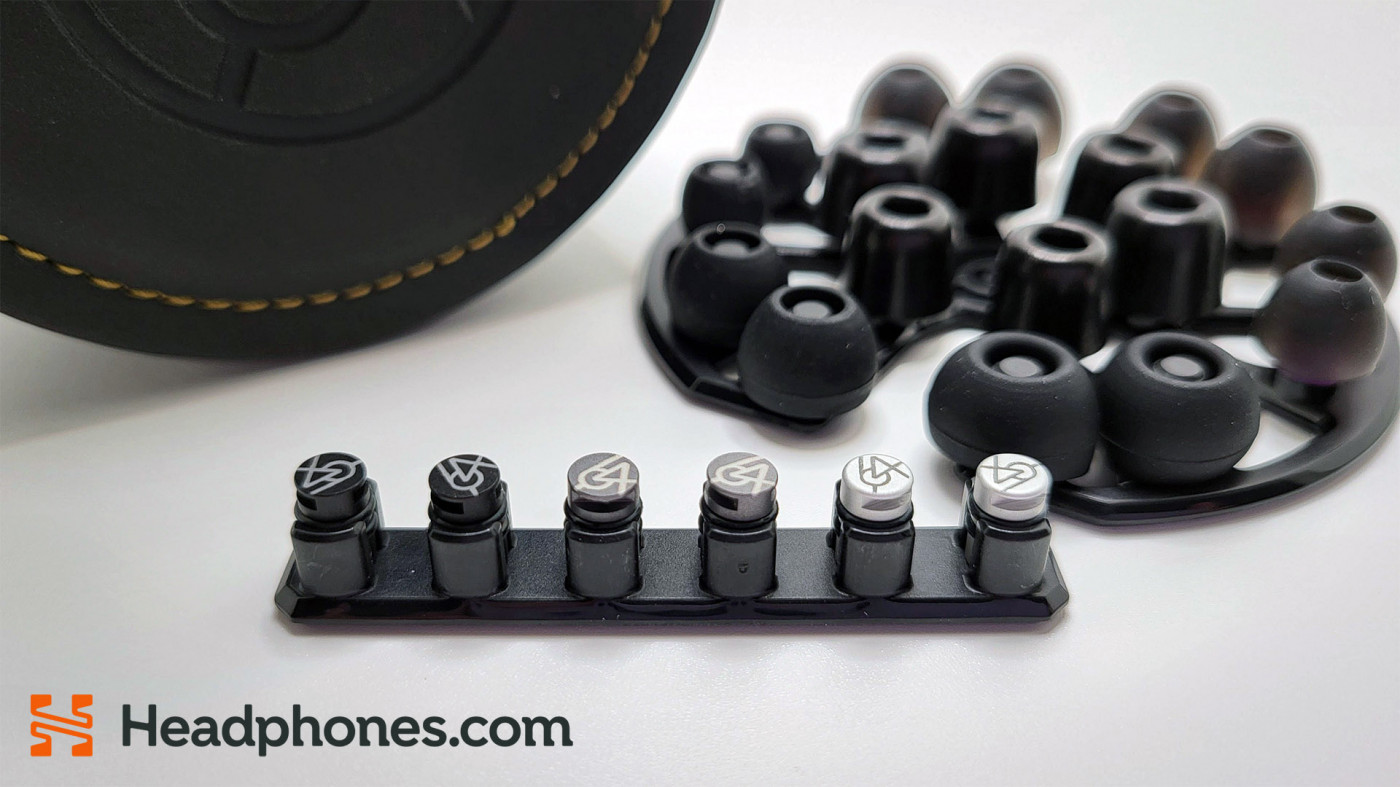
The U18s comes with a decent suite of accessories:
- Two different sets of silicon and one set of foam tips S/M/L sizes all held in a fancy circular tip holder. For this review, I opted to use the Azla Sedna tips as the stock tips didn’t fit me too well and I had used these tips for my other 64 Audio IEM reviews.
- The m20, m15, and mX APEX modules which modify the bass response of the U18s depending on which you choose. I will be using the m15 module for the majority of this review as that is the “default” set.
- 8-core braided 2-pin silver cable. It has a memory wire to hold the earhooks in place. The L-shaped jack is quite large and more suited for a headphone cable but otherwise, I think cable enthusiasts will like what 64 Audio has included here. While I personally felt that there was still too much cable memory and noise, it definitely feels like a premium cable in hand.
Frequency Response and Tuning
My first impression of the U18s was rather positive. From the get-go the U18s has a warm, slightly dark tuning profile. Bass is impactful and reminiscent of the U6t but with improved nuance. The pinna gain structure in the upper mids is well executed and pulled back. Treble is overly polite with the exception of a high upper treble peak that gives a wispy sound to the hats and cymbals. With more ear-time and letting my brain adapt to its sound, the tuning profile becomes rather balanced overall. I would consider the U18s to be a reference class IEM. Not necessarily in the sense that it’s a perfectly neutral IEM with the best tonal balance. But in the sense that it’s an IEM I could confidently reach for after a day of listening to different gear with all sorts of tunings and enjoy music with.
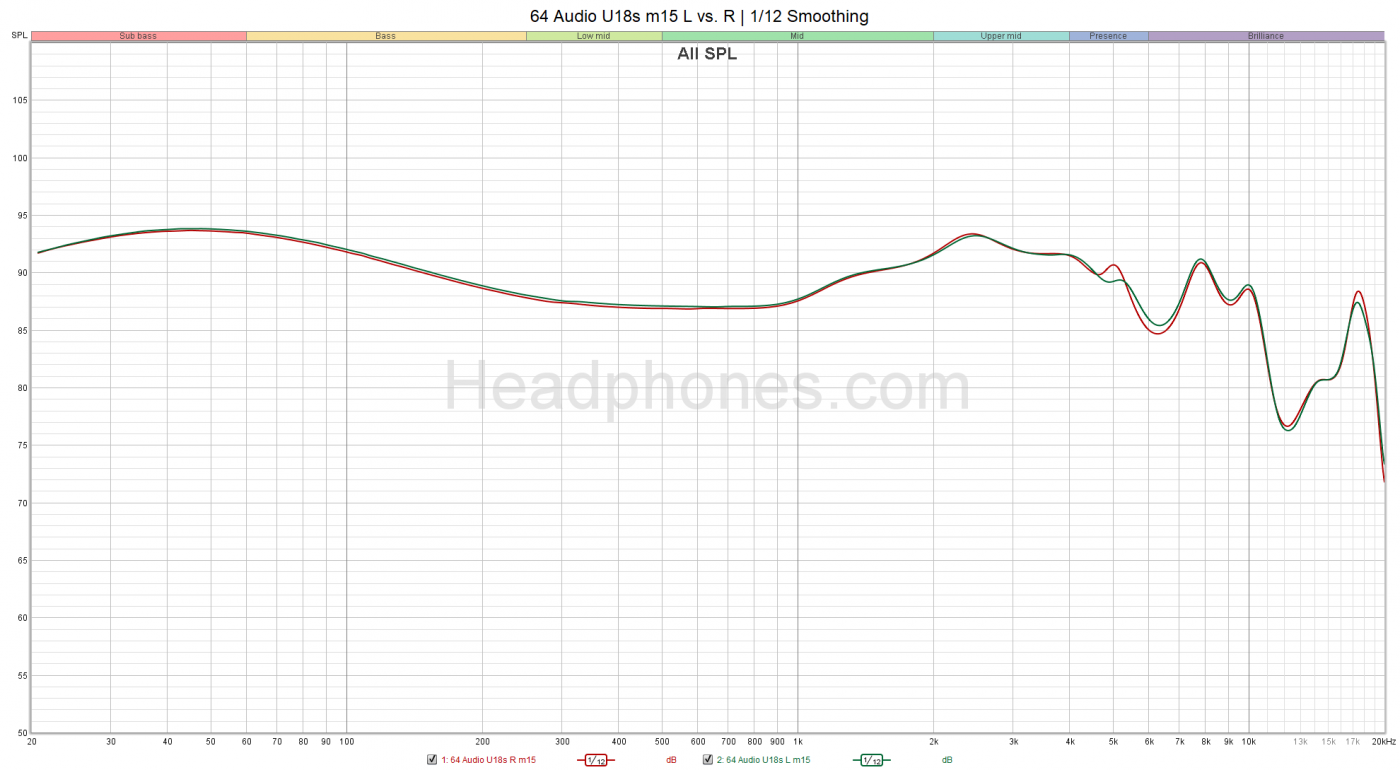
Frequency response of the 64 Audio U18s using the m15 APEX modules. Measurement taken with an IEC-711 clone microphone. Comparisons can only be made relative to other measurements taken by this specific microphone. A peak at about 8 – 10 kHz is likely an artifact of the measurement rig and may not exist as depicted here. Measurements above 8 kHz are not accurate. If possible, reference multiple measurements.
The graph of the U18s pretty much confirms all of my initial thoughts. The tuning is well done and that is reflected in the graph. I wouldn’t say the U18s is as bassy as it may seem here. There’s a healthy amount of bass to give meat to the music without being the primary focal point. The bass shelf ending around 300 Hz and mild pinna gain of about 6 dB centered at 2.5 kHz is what gives the U18s its warmth. While measurements past the 8 kHz peak should be taken with a grain of salt, in general we can see how the tamed treble of the U18s is structured. There is lower treble dip at 6 kHz, a brief mid treble elevation to prevent it from sounding totally dark, and then an exaggerated upper treble peak that I noted earlier.
Instrument Notes
Drums
Bass quality is really quite good. The leading transient is slightly blunted but otherwise provides good definition to each note. The decay is lengthy and emulates the feeling of a dynamic driver well. This leads to the kick and tom of the drums having dynamic impact. They’re bodied with plenty of depth and has a satisfactory boominess that isn’t overdone. Impressively, there is an added underlayer of notes that can be heard in the toms and snare on the U18s. These are deep, quiet notes that play in the background to enrich the primary melody of the track. The ability of the U18s to clearly reveal these additional low-level notes that I previously never paid attention to before wins a lot of points in my book.
Hats and cymbals are mostly tonally correct. The treble is very forgiving; hats and cymbals are there to add a touch of flavor rather than be in the spotlight. As such, notes aren’t particularly sharp or crisp but have a defined stick impact and steady decay. The only oddity is the aforementioned wispiness at the tail end of tones as a result of overemphasized upper treble. If you’ve ever played around with EQ and added an excessive amount of upper treble, you’ll know exactly what I’m talking about. While I don’t find it annoying per se, it’s something that you’ll always notice in the hats and cymbals when it happens if you’ve heard it before.
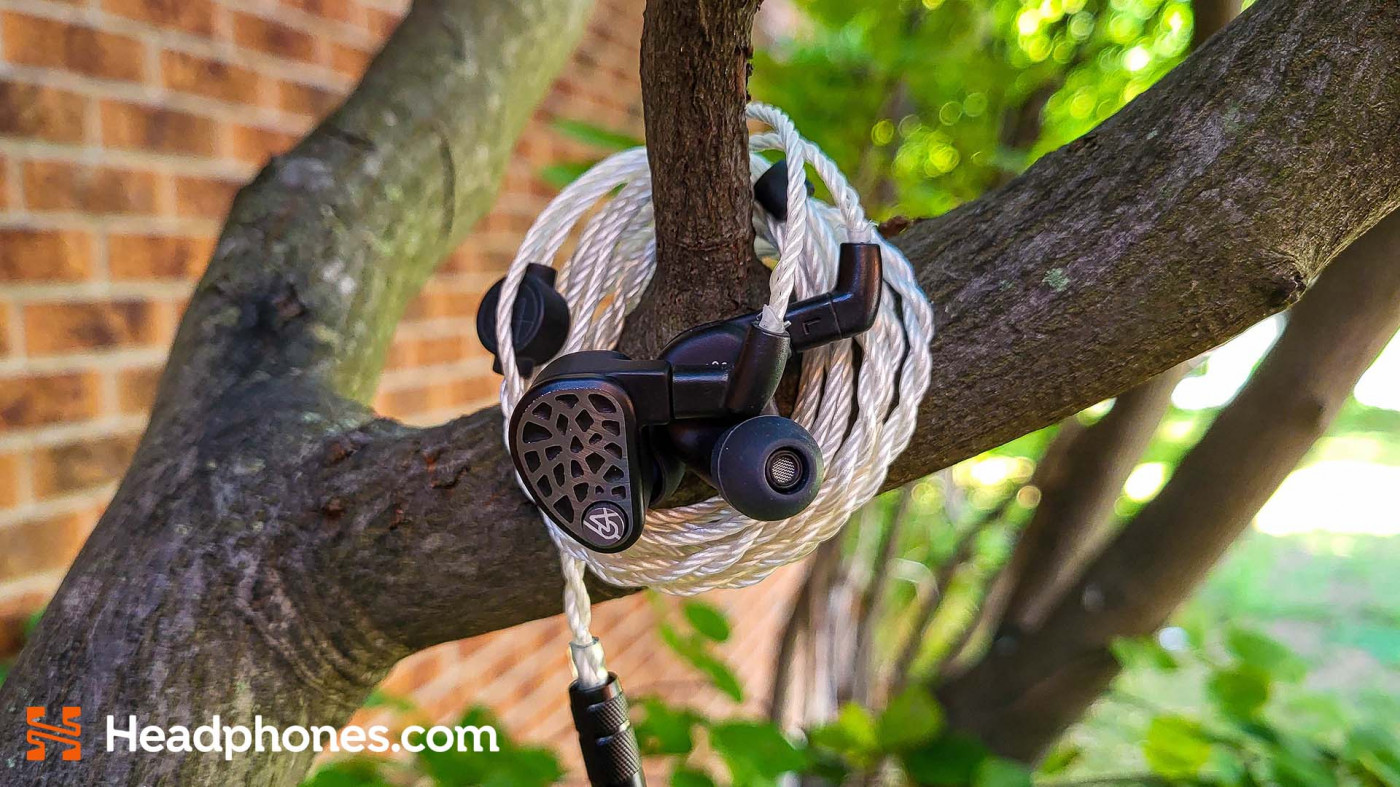
Guitars and Strings
As with most IEM tuned with a reference type of signature, there isn’t too much to say here. No complaints on the timbre on any of the strings. Cellos are rich, acoustic guitars are lush, and electric guitars have a bodied tone. However, I do think the darker tuning of the U18s does hold back some clarity and bite of the electric guitar. Lines on the bass guitar are distinct and easily distinguished. While they don’t necessarily sharply “pop”, they have plenty of grunt and tactility.
Vocals
Vocals are almost dead neutral – almost, as it leans warm and are too relaxed to be truly neutral. Male and female vocals perform with the same level of excellence. Vocals are well distinguished between lead and backing singers or among a chorus. There is no sibilance or harshness to my ear. While I generally enjoy some lower/mid treble presence to give vocals a small boost of air and vividness, I don’t find myself wishing for that on the U18s. Its vocal presentation is just right for the type of sound that the U18s has been built for. Like the hats and cymbals however, you can occasionally hear the upper treble wispy exaggeration in the trailing tone of S’s.
Presentation
Like most 64 Audio IEMs, the U18s has a strong handle on staging. The soundstage is well rounded with a good sense of stage width, height, and depth. Imaging happily makes use of the available soundstage to bring a realistic depiction of how instruments are placed. The prime example that comes to mind on the U18s are the floor toms that I mention above. Filling notes are nicely panned and recessed into the back to create the illusion of the depth of a live stage. Instruments are easily separated and layered on top of each other. They’re given plenty of space to play around each other rather than compete for attention.

The U18s lives up the 64 Audio heritage of excellent resolution, though perhaps not to the level of its place as one of their flagship products. I do hear a few extra notes here and there off in the background, but resolution doesn’t standout as a defining aspect of the U18s unlike how it did on the Trio for me. As with the 64 Audio IEMs, dynamics a clear step above average. There’s a good sense of physicality engrained throughout the U18s when listening to music. To tie everything together is a superb sense of coherency. The U18s never stumbles regardless of the complexity of the tracks you feed it.
APEX Modules – m15, m20, and mX
A key feature of 64 Audio IEMs is their interchangeable APEX modules. Specifically, the U18s comes with the m15 (dark gray), m20 (silver), and mX (black) modules. Each set will run you a cool $100 on 64 Audio’s website. As I noted in my U6t review, these modules act as tuning filters that primarily modulate bass response. The m15 and m20 modules are very similar with the exception of a tad more subbass elevation on the m20. The only real difference between them is a minor amount of added subbass rumble and decay on the m20. Practically speaking, this makes the m15 slightly cleaner on some recordings while the m20 has more low-end grit. It’ll be a preference toss-up if you want that extended subbass depth.
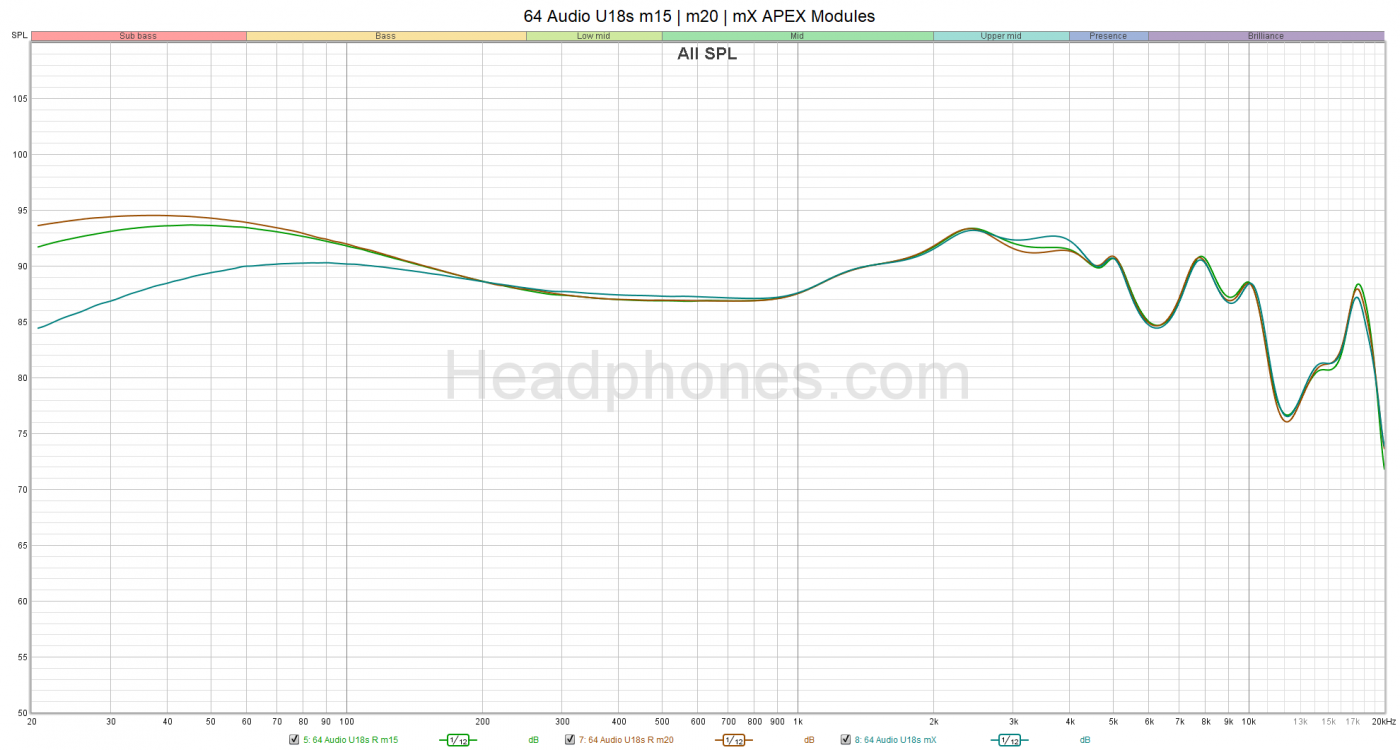
The mX module is unique as it effectively transforms the U18s into a midbass focused IEM. Despite this, the U18s doesn’t lose its sense of dynamism. With the subbass attenuated, the upper mids become the point of focus for the U18s. Vocal clarity takes center stage and draws closer to being fully neutral. The one drawback however is that the treble becomes a lot more prominent and quite a bit sharper. Like the Trio, there is a bit of a “clicky”ness with the hats. It’s like being crisp but without the full decay to give the backend of the note.
Personally, I can see myself using the U18s with the mX module if I’m listening at my desk and the m15/m20 modules when out and about. The added bass compensates for outside noise while the mX module is better suited for a quiet environment and more critical listening.
Comparison to U6t
Unfortunately, as I haven’t had the chance to review the U12t I’ll only be comparing it to the U6t. And in my eyes, it’s a perfect comparison. The U18s is effectively a souped-up version of the U6t. The bass response has a very presentation but the U18s has better resolution and nuance, especially in the lower octaves and backing notes. There’s better balance in the mids of the U18s compared to the U6t where the tonal balance is noticeably improved. Interestingly, I don’t hear the same upper treble wispiness in the U6t that I do with the U18s.
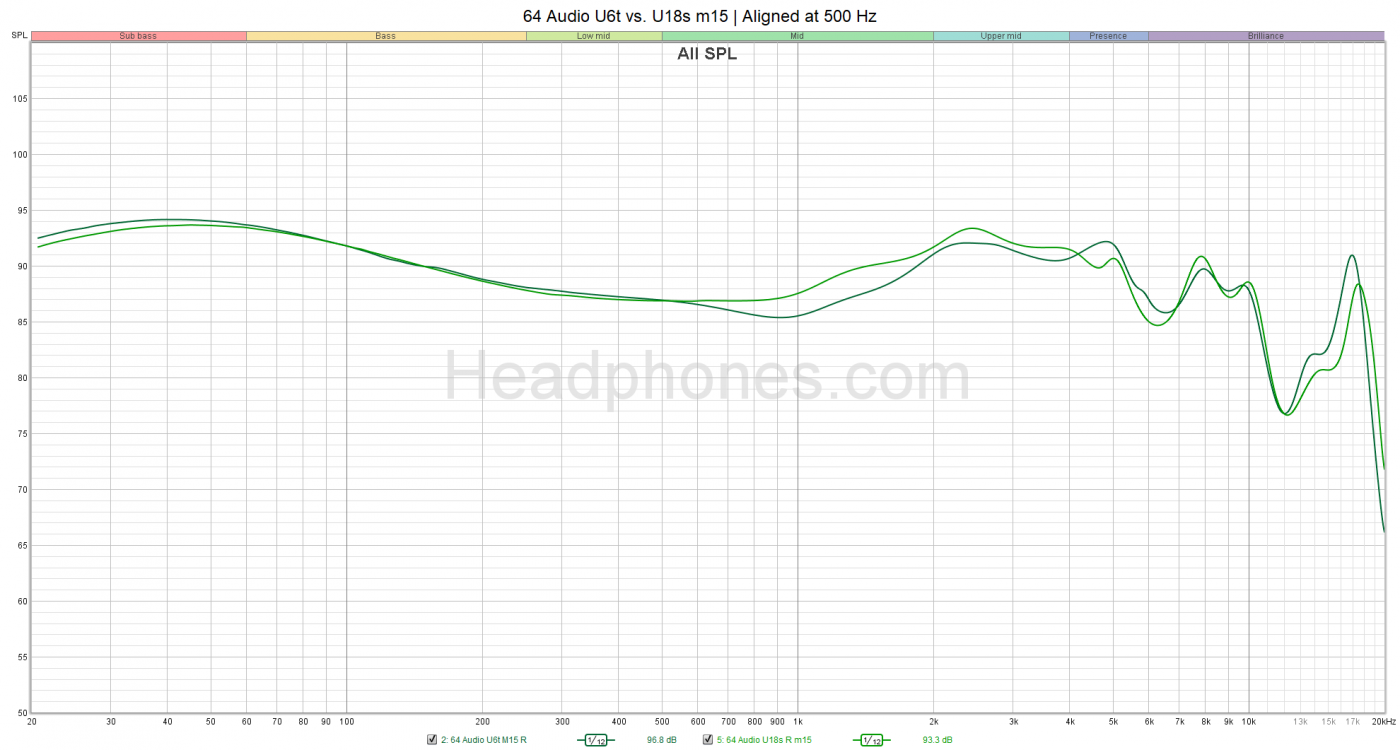
Overall, while both IEMs do sound quite similar to each other despite the difference in the mids as seen on the graph here, the U18s just sounds more effortless, more dynamic, and more coherent than the U6t. For example, those low-level background notes that I hear on the U18s aren’t present in the U6t. But in all fairness to the U6t, it brings the vast majority of the U18s experience at 1/3rd of the price.

Should You Buy It?
Yes, with a soft recommendation. There’s no doubt that the U18s is a great IEM but it isn’t a game changing one. When we get into kilobuck prices, price/performance arguments break down as these are truly luxury products. But even with that in mind, at $2,999 the U18s is quite an expensive IEM given its marginal improvements over the U6t for triple the price. If you have a healthy wallet and what I’ve described of the U18s is right down your alley, by all means. It’s an effortless reference set that’s highly enjoyable for day-to-day listening. But for those with a limited budget, I would suggest looking at the U6t, U12t, or even the Trio instead and putting those savings towards rounding out your other audio gear.
